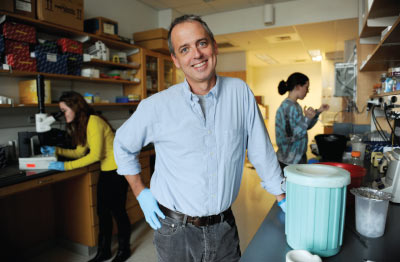Humans just love seeing animals demonstrate love: cuddly chimps grooming each other, say, or penguin pairs carefully passing their egg in the driving snow. Videos of cows joining dog packs or cats and birds becoming friends dot our social media feeds, shared hundreds of thousands of times.
Those animal relationships are more complicated than we think, says Patrick Abbot, associate professor of biological sciences at Vanderbilt University, and one can’t always apply the human idea of love to them. It’s more likely these behaviors help them survive and reproduce.
Don’t label Abbot a Valentine’s Day naysayer, though, because he’s just the opposite. Even if animals have ulterior motives for teaming up, they teach humans a lot about love.
“The animal world teaches us again and again that falling in love is advantageous to humans,” Abbot says. “And knowing why animals do these things makes something like Valentine’s Day richer because it makes me feel a part of this larger biological enterprise. Who can’t look at a couple of animals courting and not feel a kinship for what they’re doing, which is basically saying, ‘I like you. Let’s see where this leads.’”
 Abbot teaches undergraduate- and graduate-level courses on observing animal behavior, which can serve students heading into any type of career since close observation is key for all of them, he says.
Abbot teaches undergraduate- and graduate-level courses on observing animal behavior, which can serve students heading into any type of career since close observation is key for all of them, he says.
What students learn is that animals express behaviors that may look like love to us, but keeps them and their offspring alive and thriving. For instance, in those penguin pairs, the male keeps the egg and hatched chick safe while the female leaves for weeks on end to feed, exchanging places when the female returns.
“That classic image of primates grooming each other is an example of how they strengthen a social bond for protection from predators or parasites,” Abbot said. “In some animals, you may even see one issuing a warning call, which seems like it’s demonstrating love for the group and putting itself in danger, but it also may be saying, ‘I’m the toughest or healthiest member here, but there are weaker ones nearby you can get.’
“There are lots of biological explanations for these kinds of social bonds, but they’re what we humans recognize as love.”
Last year, Abbot published an edited volume entitled Comparative Social Evolution, an update of and companion book to E.O. Wilson’s famous 1975 tome, Sociobiology. The book is available from Cambridge University Press.